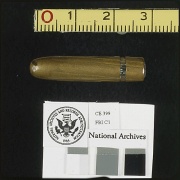Difference between revisions of "November 22"
m (1 revision) |
(Replaced content with "{{day |yesterday= November 21 |tomorrow= November 23 |month= November }}") |
||
| Line 1: | Line 1: | ||
| − | + | {{day | |
| − | + | |yesterday= November 21 | |
| − | + | |tomorrow= November 23 | |
| − | + | |month= November | |
| − | + | }} | |
| − | + | ||
| − | + | ||
| − | + | ||
| − | + | ||
| − | + | ||
| − | + | ||
| − | + | ||
| − | + | ||
| − | + | ||
| − | + | ||
| − | + | ||
| − | + | ||
| − | + | ||
| − | | | + | |
| − | | | + | |
| − | | | + | |
| − | + | ||
| − | + | ||
| − | + | ||
| − | + | ||
| − | + | ||
| − | + | ||
| − | + | ||
| − | + | ||
| − | + | ||
| − | + | ||
| − | + | ||
| − | + | ||
| − | + | ||
| − | + | ||
| − | + | ||
| − | + | ||
| − | + | ||
| − | + | ||
| − | + | ||
| − | + | ||
| − | + | ||
Latest revision as of 10:07, 23 November 2013
| << Previous (November 21) | Next (November 23) >> |
Featured Article
| On this day in 1963, millions of shocked and horrified Americans, glued to radios or televisions across the nation, waited through hours they would never forget in the wake of the news that had hit the nation like a freight train: "The President is dead." As unbelievable as the news had been, the explanation that would follow seemed even more so — actor Kevin Costner, portraying New Orleans D.A. Jim Garrison in the 1991 film "JFK," summed it up succinctly:
"Never in the history of gunfire has there been a bullet this ridiculous." Ever since the assassination of John F. Kennedy the question has lingered: how could just one bullet possibly traverse 15 layers of clothing, 7 layers of skin, approximately 15 inches of tissue and a necktie knot, remove 4 inches of rib, and shatter a radius bone? Simply preposterous, right? A Discovery Channel special "Unsolved History: JFK — Beyond the Magic Bullet", attempted to replicate the conditions of that day. The participants set up blocks of ballistics gel with a substance similar to human bone inside. Next, two mannequin figures made of ballistic anatomical substances (animal skin, gelatin, and interior bone-analog cast) were set up in the exact relative position of JFK and Connally. A marksman, from a distance equal to that of the sixth floor of the Book Depository building, fired the same rifle model found in the Book Depository, using a round from the same batch of Western Case Cartridge Company 6.5x52 mm ammunition purchased with the surplus Carcano weapon in early 1963. The results were astounding.(Click here to find out just how astounding) |
On this day
| [more] What else happened today
|
|---|
|
Today in pictures
| Featured Image | Featured Video |
|---|---|
| November 22/image | November 22/video |
